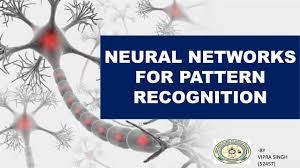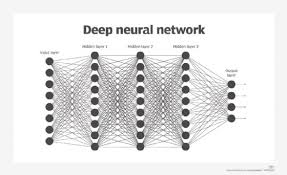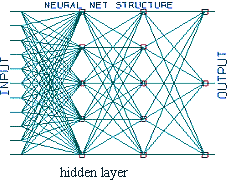Pattern Recognition and Neural Networks
Pattern recognition is a fundamental aspect of human cognition, allowing us to make sense of the world around us by identifying regularities and similarities in data. In the field of artificial intelligence, pattern recognition plays a crucial role in tasks such as image and speech recognition, natural language processing, and predictive analytics.
One powerful tool used in pattern recognition is neural networks. Neural networks are computational models inspired by the structure and function of the human brain. They consist of interconnected nodes, or neurons, that process information in parallel to recognize patterns and make decisions.
Neural networks excel at learning complex patterns from large datasets through a process called training. During training, the network adjusts its internal parameters based on input data and expected output, gradually improving its ability to recognize patterns and make accurate predictions.
One key advantage of neural networks is their ability to generalize from training data to unseen examples. This allows them to effectively handle noisy or incomplete data and adapt to new patterns without explicit programming.
Applications of neural networks in pattern recognition are vast and diverse. In image recognition, convolutional neural networks (CNNs) have revolutionized tasks such as object detection and facial recognition. Recurrent neural networks (RNNs) are widely used in natural language processing for tasks like sentiment analysis and machine translation.
As technology advances, the combination of pattern recognition and neural networks continues to drive innovation across various industries. From healthcare diagnostics to autonomous vehicles, these powerful tools are reshaping how we interact with technology and enabling new possibilities for the future.
9 Essential Tips for Effective Pattern Recognition with Neural Networks
- Understand the problem domain before designing a neural network for pattern recognition.
- Preprocess and normalize your data to improve the performance of the neural network.
- Choose an appropriate activation function based on the nature of the problem and data.
- Experiment with different network architectures to find the most suitable one for the task.
- Regularize your neural network to prevent overfitting and improve generalization.
- Use techniques like dropout or batch normalization to enhance the training process.
- Monitor and analyze performance metrics such as accuracy, loss, and validation scores regularly.
- Consider using pre-trained models or transfer learning to leverage existing knowledge for pattern recognition tasks.
- Stay updated with advancements in neural networks and pattern recognition research.
Understand the problem domain before designing a neural network for pattern recognition.
Before designing a neural network for pattern recognition, it is crucial to thoroughly understand the problem domain. By gaining a deep understanding of the specific patterns and complexities within the data, you can tailor the neural network architecture and parameters to effectively capture and analyze relevant features. This foundational knowledge not only guides the design process but also ensures that the neural network is optimized to deliver accurate and meaningful pattern recognition results within the given problem domain.
Preprocess and normalize your data to improve the performance of the neural network.
To enhance the performance of a neural network, it is essential to preprocess and normalize the data before training. By preprocessing the data, such as handling missing values, removing outliers, and scaling features, we can ensure that the neural network receives clean and consistent input. Normalizing the data, for example by standardizing or min-max scaling, helps in bringing all features to a similar scale, preventing certain features from dominating others during training. These preprocessing steps not only improve the efficiency of the neural network but also contribute to better pattern recognition and more accurate predictions.
Choose an appropriate activation function based on the nature of the problem and data.
When working with pattern recognition and neural networks, it is crucial to select the right activation function that aligns with the specific characteristics of the problem and data at hand. The choice of activation function can greatly impact the network’s ability to learn and recognize patterns effectively. By understanding the nature of the problem and data, and selecting an appropriate activation function, neural networks can optimize their performance and accuracy in pattern recognition tasks.
Experiment with different network architectures to find the most suitable one for the task.
When delving into the realm of pattern recognition and neural networks, it is essential to experiment with various network architectures to determine the most optimal one for the specific task at hand. By exploring different configurations and structures, researchers and developers can fine-tune the neural network to enhance its performance in recognizing patterns accurately and efficiently. This iterative process of experimentation not only helps in identifying the most suitable architecture but also deepens our understanding of how neural networks operate and adapt to different types of data.
Regularize your neural network to prevent overfitting and improve generalization.
Regularizing your neural network is a crucial tip to prevent overfitting and enhance generalization. By incorporating regularization techniques such as L1 or L2 regularization, dropout, or early stopping, you can effectively control the complexity of your model and reduce the risk of memorizing noise in the training data. This helps your neural network to focus on learning meaningful patterns and improves its ability to generalize well to unseen data, ultimately enhancing its performance and reliability in real-world applications.
Use techniques like dropout or batch normalization to enhance the training process.
To enhance the training process in pattern recognition and neural networks, it is recommended to utilize techniques such as dropout or batch normalization. Dropout is a regularization method that helps prevent overfitting by randomly deactivating a fraction of neurons during training, promoting robustness and improving generalization. On the other hand, batch normalization normalizes the input of each layer to stabilize and accelerate the training process, leading to faster convergence and better performance. By incorporating these techniques into neural network training, researchers and practitioners can effectively improve model efficiency and accuracy in pattern recognition tasks.
Monitor and analyze performance metrics such as accuracy, loss, and validation scores regularly.
Monitoring and analyzing performance metrics such as accuracy, loss, and validation scores regularly is crucial when working with pattern recognition and neural networks. By keeping a close eye on these metrics, practitioners can gain valuable insights into the network’s performance, identify areas for improvement, and make informed decisions to optimize its efficiency. Regular monitoring allows for timely adjustments to training parameters and model architecture, ensuring that the network continues to learn effectively and deliver accurate results in pattern recognition tasks.
Consider using pre-trained models or transfer learning to leverage existing knowledge for pattern recognition tasks.
When tackling pattern recognition tasks, it is advisable to consider utilizing pre-trained models or transfer learning techniques to capitalize on existing knowledge. By leveraging pre-existing models trained on large datasets, you can expedite the learning process and enhance the performance of your neural networks in recognizing patterns. Transfer learning allows you to adapt and fine-tune these models to suit your specific task, saving time and resources while achieving more accurate results in pattern recognition applications.
Stay updated with advancements in neural networks and pattern recognition research.
To stay ahead in the field of pattern recognition and neural networks, it is crucial to stay updated with the latest advancements in research. By keeping abreast of new developments in neural network architectures, training techniques, and pattern recognition algorithms, you can leverage cutting-edge technologies to enhance your understanding and application of these powerful tools. Continuous learning and staying informed about emerging trends will not only expand your knowledge base but also enable you to adapt to evolving challenges and opportunities in the dynamic landscape of artificial intelligence.




